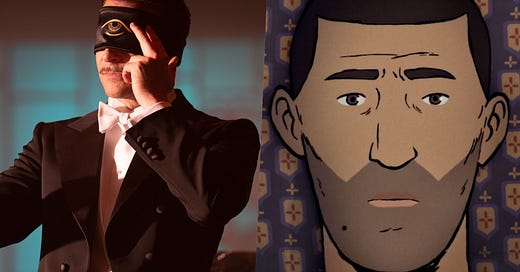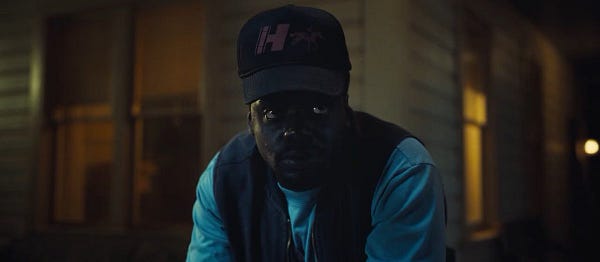Nightmare Alley, Flee, and Oscar noms
Trauma stories, plus snubs and wishes for the Academy Awards
Hello!
On this week’s episode of Criticism Is Dead, we discuss Nightmare Alley and Flee, two films about men grappling with haunting pasts.
Click here to listen to the full episode on the web
Or listen on Apple Podcasts, Spotify, Stitcher, Pocket Casts, Google Podcasts, or other podcast apps.
This episode is brought to you by MUBI, a curated streaming service showing exceptional films from around the globe. Catch some of our recommendations in this episode, and try MUBI for free for 30 days at MUBI.com/criticismisdead.
03:02 Nightmare Alley, available on HBO Max and Hulu, is a visually sumptuous lesson in the genre of film noir.
Guillermo del Toro’s latest release has its detractors (such as… a lot of our favorite critics…). But this Oscar-nominated film adaptation of a 1946 novel is actually kind of compelling, not to mention gorgeous. Especially if you take it as a vehicle through which to better understand noir. The genre is fundamentally about exploring fatalism, futility, and the darker side of man, especially the everyman. This movie does that very effectively, between its use of the carnival geek, alcoholism and addiction, and the protagonist Stan. No matter how much you struggle to rise above the mud and muck of the world, this movie is saying, your efforts will end in futility.
Some additional reading on this film that I found interesting:
21:29 The animated docudrama Flee, streaming on Hulu, is a tender, bittersweet account of surviving the terrors of humanity at a young age.
Flee’s strength lies in its specificity: The Oscar-nominated film doesn’t just draw sweeping summations of the “refugee experience,” but hones in on the story of one subject, whose life matters personally to the person behind the camera. Filmmaker Jonas Poher Rasmussen not only has his own familial heritage of fleeing and survival, but he is longtime friends with Amin, and that relationship imbues this film with an intimacy that is so integral to its narrative and emotional strength. Rasmussen cares about Amin’s trauma, but also his childhood joy, his playfulness, his family, his journey coming out as a gay man. All of those parts add up to a moving, breathing whole. While the animation may not be the best in the game (it’s expensive!), it more or less accomplishes its goal of creating an emotive retelling while obscuring the real-life identity of its subject.
39:41 Plus, culture notes about this year’s Oscar nominations.
Including who we want to win and who got shut out in the cold.





Bonus links
Okay… which film should we rig:
So much heavy breathing… Is she jerking him off in this???

Pod favorite Alison Herman on the vital question of how couples watch TV.
Yes:


That’s it for now! We are OFF next week but see you the week after that :) If you want to take the extra time to try to watch The Worst Person in the World in a theater somewhere… we will probably be talking about that soon!!
— Jenny
Follow us on Twitter and Instagram!
Please rate/review on Apple Podcasts, Spotify, Stitcher, Pocket Casts, Google Podcasts, WHEREVER, and tell a friend about us!
Inquiries, complaints, and recs for what to watch can go to criticismisdead@gmail.com.
Some credits:
Music: REEKAH
Artwork and design: Sara Macias and Andrew Liu










